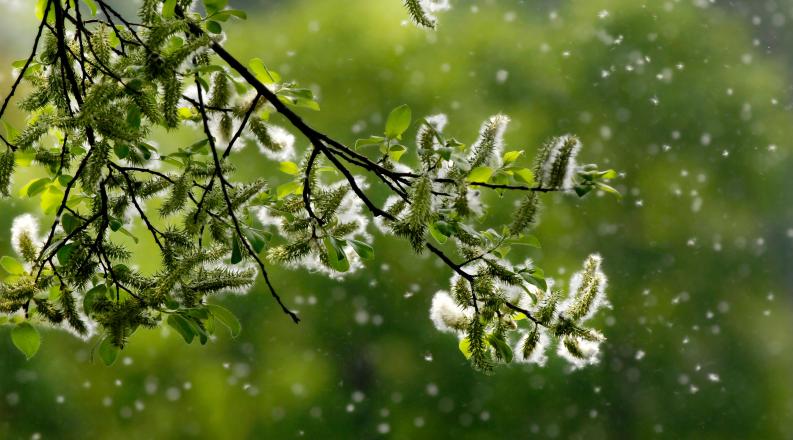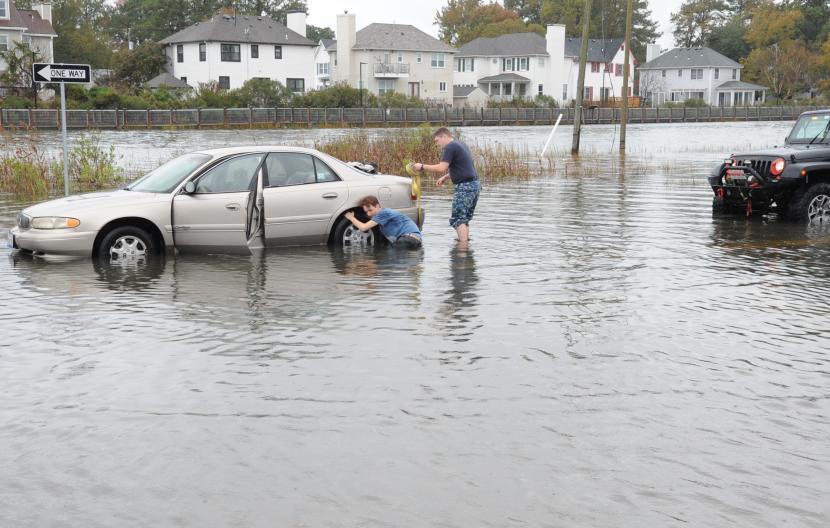By Amber Kennedy
In the coming weeks, neon-green pollen will coat cars, porches and outdoor furniture across the region, and sales of over-the-counter allergy medications will surge. If it feels like allergies are getting worse, you aren't imagining it: longer-lasting symptoms are another side effect of climate change, according to Jim Blando, an associate professor of community and environmental health in Old Dominion University's College of Health Sciences.
As the planet's temperatures climb, allergy seasons are likely to get longer and more severe. Warmer temperatures extend growing seasons and facilitate more water in the atmosphere, leading to increased levels of pollen and mold. Studies already show climate change has extended the length of the pollen season in the United States and Europe. In the U.S., what's considered "allergy season" is progressively longer farther into the South and is increasing with climate change, Blando said. The American College of Allergy, Asthma & Immunology (ACAAI) estimates more than 50 million Americans suffer from allergies each year.
Scientists don't expect humans to evolve to the changing allergy conditions. Instead, "we'll be spending a lot more money on allergy products," Blando said, noting the latest estimates show $18 billion is spent per year on treatment of allergic rhinitis in the U.S., including over-the-counter and prescription medications. "That's increased over time, which is another indicator allergies are getting worse."
Although most people associate allergy season with itchy eyes, runny noses and congested throats, some may experience skin reactions, such as urticaria - a reaction similar to hives. The prevalence of food and skin allergies increased in children under 18 from 1997 to 2011, according to the ACAAI.
Climate change could also yield more food-related allergies. A 2005 study conducted by the U.S. Department of Agriculture examined ragweed grown under the conditions projected for the mid-21st century. The study found increases in carbon dioxide could increase the potency of ragweed pollen's allergens, and consequently, the prevalence and severity. Blando wonders if increased carbon dioxide could have similar effects on the food supply.
"Food allergies are complex, and studies aren't as definitive because there are so many potential factors," Blando said. "But it's possible climate change explains why it may feel like there are more food allergies."
While it's unlikely anything can be done to reverse the heightened severity of allergy season, Blando said adopting measures recommended by climate scientists to slow the warming of the planet can help. "What we're doing to try to address climate change is what will help with allergy season. In the absence of doing that, I think we're going to see it continue to get worse," he said. "Innovation could always produce amazing things. Never say never."
To make allergies more bearable, Blando has the following tips:
- Think before you plant: Allergy sufferers may have to choose between personal comfort and planting for pollinators; certain plants, trees and grasses may trigger allergies more than others.
- Get HEPA-quality filters: Studies show a properly sized high-efficiency particulate air (HEPA) filter significantly helps. A HEPA air filter can theoretically remove at least 99.97% of dust, pollen, mold, bacteria and any airborne particles with a size of 0.3 microns, according to the U.S. Environmental Protection Agency. The filters are rated by Minimum Efficiency Reporting Values, or MERVS; the higher the MERV rating, the better the filter performs at trapping particles. Get one for the rooms where you spend the most time, likely bedrooms, living rooms or home offices.
- Skip the ionic air purifiers: Ionic cleaners produce ozone and, in some cases, can cause more irritation.
- Change vent filters: Use high-quality filters for the return vents for HVAC systems and replace at least once a quarter.
Related News Stories
ODU’s Peter Bernath Participates in Study that Reveals Damage to Ozone Layer from Extreme Wildfires
Research findings from 2020 Australian fires show a drop in radiation-blocking stratospheric layer. (More)
Life in Hampton Roads Survey: Flooding, Hurricane Evacuation and Sheltering During COVID-19
Residents' fears about sheltering during a hurricane or major flooding event amid the pandemic appear to have eased from last year. (More)
William Dunstan, Longtime Chair of the Department of Ocean and Earth Sciences, Dies at 87
He merged the oceanography and geology programs into one department and played a key role in the creation of the Center for Coastal Physical Oceanography. (More)






